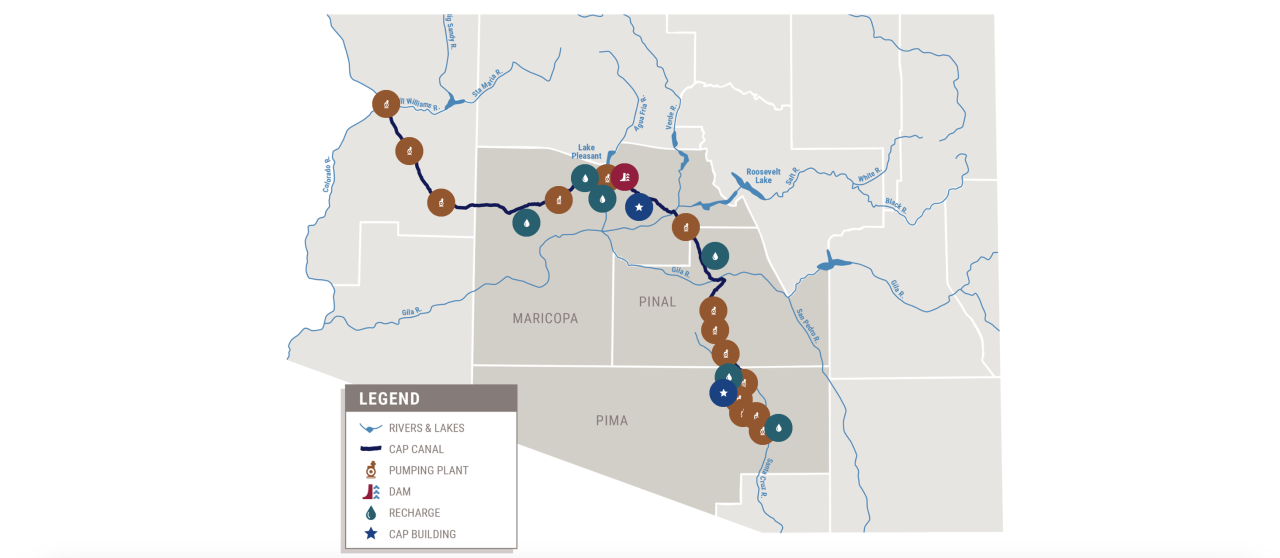MARANA, Ariz. (KGUN) — The Central Arizona Project is responsible for providing water to more than 700,000 Tucsonans every year.
But how do billions of gallons of water make their way from the Colorado River to our homes?
It’s truly an engineering marvel. The Central Arizona Project pumps water from the Colorado River, nearly 3,000 feet from Lake Havasu, that eventually ends up at 14 water pumping plants before that water then finds its way into your home.
CAP was officially completed in 1993.
Nollie Templeton, a planning analyst with CAP, said "The infrastructure has served its purpose. It has reliably delivered the Colorado River to central Arizona."
Templeton said the need for such a system had everything to do with the state’s heavy reliance on groundwater.
"The state knew that it was overusing our groundwater. The groundwater use wasn’t going to be sustainable into the future," she said. "And so they saw the need for an alternative water supply."
The $4 billion project took 20 years to build and stretches 336 miles from Lake Havasu to the San Xavier Indian Reservation, delivering water to more than 80% of Arizona’s population.
"It delivers Colorado River water in Maricopa County, Pinal County, and, of course, Pima County," Templeton said.
The process starts at the Mark Wilmer pumping plant along the Arizona-California border.
Templeton said, "From there, it pumps water up through a mountain into a tunnel and then into the CAP Aqueduct."
It’s the first of 14 located along the CAP's aqueduct.

"As the water moves through the system, it travels by gravity until it needs a pumping stanchion to be able to make it continue its journey," Templeton added.
She said each city decides how it's going to provide its allocated water to its residents. Tucson receives 44 billion gallons a year.
Tap water in Tucson is a combination of groundwater and water from the Colorado River.
"Tucson takes all of their Colorado River water and pumps it into their groundwater aquifers," Templeton said. "At which point they pump out their groundwater aquifers for their water deliveries."
With the effects of climate change on our rivers and lakes, including the one more than 6 million Arizonans rely on for water, being proactive may be the key to continued sustainability.
"We are very aware of our changing climate and additional measures that need to be put in place to ensure our infrastructure continues to operate well into the future," she said.
RELATED: Cloud seeding potential exists in Arizona, per new report
Water harvesting: Blooming yards while saving water
——-
Kenny Darr is a reporter for KGUN 9. He joined the team in January 2023. Before arriving in Arizona he was an Anchor and Reporter at KADN in Lafayette, LA. Share your story ideas with Kenny by emailing kenny.darr@kgun9.com or by connecting on Facebook, Instagram or Twitter.





